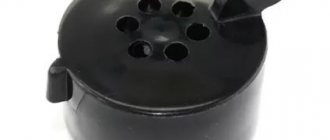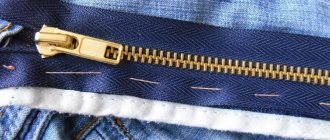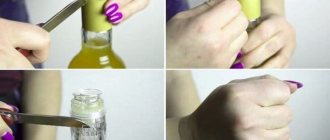How to disassemble the lid of a thermos with a button
The principle of operation of the thermos lid is very simple.
You press a button, the valve opens and the contents of the tilted thermos are poured through the hole into another container. The button is returned to its place using the internal valve spring.
Some manufacturers complicate the design of the thermos button by adding small parts to the design that allow the button to operate more smoothly and provide a better seal to the lid. But the more parts there are in the assembly, the higher the likelihood of some small thing failing, which will affect the operation of the valve as a whole.
The lid valve also has a number of disadvantages, which are caused by possible clogging of the overflow, accumulation of deposits and, accordingly, the appearance of unpleasant odors.
Thermos users deal with the situation in different ways. Some people clean the lid of a thermos with a button at a selected frequency, soaking the device in a solution of baking soda, others load the lid into the dishwasher, others completely disassemble the structure and mechanically clean each component part.
All parts of the lid valve are made of food-grade plastic. On the one hand, you get a guarantee that no harmful substances will get into the liquid, but on the other hand, the strength of the plastic is low, and the valve mechanism and button wear out quickly.
In case of damage that is not associated with deformation of the valve and you only need to restore the connection of the structure or install the fallen part in place, the repair can be done with your own hands.
Therefore, if the button in the thermos is broken , do not rush to buy a new one, but try to disassemble the lid using our tips.
Kinds
- For drinks. Classic, with a narrow neck, available in different sizes.
- For food. As a rule, these are metal thermoses with a wide neck of almost the same diameter as the body itself. You can store both first and second courses in it.
- Universal. A thermos with a double neck, that is, with an additional narrower hole for drinks.
The remaining modifications can be called variations of the above.
Repairing a thermos lid with a button - step-by-step instructions
Let's consider three options for constructing a lid with a button. The first design is the simplest, with a minimum of details and everything is intuitive.
Here, repairing the thermos button will consist of the usual disassembly and cleaning of the valve from deposits:
- Unscrew the clamping ring counterclockwise. We apply sufficient force, but without using a metalwork tool. The ring is quite fragile and if there are signs of the part sticking, then soak the lid in hot water for a couple of minutes.
- Remove the valve from the body.
- We push out the valve mechanism to begin further disassembly.
- We get three large fragments of the mechanism; all that remains is to get to the spring, button and other auxiliary parts.
- We increase the set of parts when further disassembling the button itself (usually it is fixed with fasteners).
- Carefully push out the valve stem so as not to damage the retaining ring; we will still need it for further assembly of the cover.
And here we have all the parts that need to be washed to remove deposits. As we can see, there is practically nothing to break here, unless the spring or retaining ring bursts due to wear. These spare parts can be picked up from other mechanisms or purchased at a hardware store.
The next version of the cover is complicated by the presence of a second button, but here too the manufacturers have provided for the possibility of disassembly. Or rather, they did not seal the mechanism, as happens when company marketers want to sell as many products as possible.
- In this case, it is necessary to pry off the cover with a thin metal blade or other object.
- The device has hidden latches that can be damaged if handled too harshly. Be careful.
- As soon as you remove the cover, all parts will be freely accessible. To ensure that reassembly does not cause difficulties, we recommend taking a photograph of the parts in the assembled state.
But why did you need to clean the valve?
These are deposits that have accumulated over the year of operation of the thermos. Follow simple rules, and your health will be completely safe, and the thermos will last for many years. Source
Methods for opening a tightly screwed thermos
If a very hot liquid was poured, you will have to wait until it cools down. But it's too long. To speed up this operation, you can use other methods. Safe opening is always associated with cooling or heating the contents of the thermos. Of course, you can try to do this with a knife or a bottle opener, but such actions can damage the thermal mug (thermos).
We use cold water
This technology is suitable for a thermos equipped with an external thread. The principle of the method is very simple. The thermos is placed under running cold water. The metal thread will narrow and the tightness of the seal to the bulb will decrease. Unscrewing the lid will be much easier.
We use hot water
If the thermos cap has an internal thread, it must be immersed in hot water. As a result of heating, the thread will begin to expand, the tight fit will loosen, and the lid will be easy to unscrew.
Use of physical force
Of course, if you apply a lot of force, it is possible to open a tightly screwed lid. The most effective way is to pull the lid in a vertical direction (up).
How to brew tea in a thermos: features and brewing rules
Let's use a bottle opener
Some models use a flat plug. To open it, you can use a bottle opener. After lifting, the vacuum formed inside the thermal mug will be broken. The lid can be easily unscrewed.
Special device
To solve the problem of a tightly closed lid, you can make an original device yourself. To work you must have:
- elastic band;
- fine-grain sandpaper;
- nut and long bolt;
- wooden planks (2 pcs), optimal length 20-25 cm.
First, holes are made in the strips through which the bolt will pass freely. Then sandpaper is glued to the surface of the plank. A bolt is threaded into the hole and secured tightly with a nut. Moreover, the sanding strips must be inside the device. The remaining free edges of the wooden planks are connected with an elastic band.
To start using the device, first adjust the size of the opener to the existing diameter of the lid using a nut. The structure is placed on the lid of the thermos, then they begin to carefully turn it. Thanks to the high friction force, the sandpaper forms a tight connection with the steel cover. Unscrewing will become much easier.
other methods
In addition to the methods described above, you can use several additional methods to open a thermos:
- The lid is wrapped with electrical tape. Then pull in the direction of the threads.
- You can use leather gloves. This material does not slip on a metal surface.
- Lightly tap the body of the thermos and its lid.
- Using a sharp knife, lightly pry off the lid. The vacuum will be broken, the opening process will become much easier.
Mechanism design and basic principles of operation
There is nothing complicated about the operation of the button, enclosed in a plastic cover. It opens immediately after pressing. The liquid is poured into a glass by tilting the container. By pressing the inner spring, we restore the valve to its place, closing the hole.
The mechanism is made of special, temperature-resistant plastic. It does not harm the user's health.
Often, the manufacturer, trying to improve the system, supplements the valve with small parts. For example, to ensure tight closure or smooth opening. Breakdowns happen frequently, and harmful substances and bacteria accumulate inside.
Material
The body of thermoses is made of plastic or metal. The former are lighter and suitable for daily use, the latter will cost more, but will last longer and will withstand falls and impacts.
The main task of a thermos is to maintain temperature. The flask is responsible for this. Glass works best and is odor-resistant. However, such a flask is not suitable for an active lifestyle - it is too fragile. A flask made of stainless or regular steel is almost as good as glass in maintaining heat, and will last longer. A thermos with a plastic flask is the cheapest option; it weighs little, but actively absorbs odors and releases them when heated.
Why is parsing required?
The food-grade plastic from which the top of the thermos is made is durable, but tends to wear out quickly. To prevent this from happening, cleaning and replacing obsolete parts is carried out in a timely manner.
Thus, there are two reasons for disassembly: breakdown and contamination.
Don’t be afraid to carry out a technical inspection of the thermos lid at home. With careful manipulation and the ability to act as effortlessly as possible, it will be as good as new and will get rid of unpleasant odors, dirt and harmful bacteria.
Follow these simple recommendations in our article and enjoy a long service life of your thermos.
Step-by-step instruction
The simplest option is to disassemble the plug of the classic design and then clean the parts. The process consists of several stages.
In a counterclockwise direction, carefully unscrew the clamping ring. Here it is better to do without plumbing tools, but you will have to make some effort. If you can’t disassemble it the first time, you can soak the plug for 5-10 minutes in hot water.
When you have managed to unscrew the part, you need to remove the valve from the body. To continue the repair, you need to push out the valve mechanism.
To get to the spring, you need to push out the valve stem. Extreme care must be taken here as there is a risk of damaging the retaining ring.
If you carefully examine all the parts obtained after disassembly, either the spring or the retaining ring may break. They can be replaced with new ones (selected from other similar mechanisms or purchased at a hardware store).
Now it is enough to clean each part and reassemble the plug in the reverse order.
New video
How to change knives on an electric planer video
How to change the bearing on a Bosch Max 5 washing machine video
How to change a kitchen faucet with your own hands without removing the sink video
How to change the pump on a VAZ 2112 16 valves with your own hands video
How the Chinese cook Chinese food video
How to change a reverse osmosis filter video
How to change the cabin filter on a Chevrolet Lacetti video
How to change the cabin filter on a Mitsubishi Lancer 9 video
Address: Kitaygorodsky proezd, 7 building 1, Moscow, Russia, 109074
See also:
Similar tasks
Possible difficulties
Some difficulties may arise with more advanced mechanisms. So, if there are 2 buttons on the lid, then during disassembly the lid must be carefully picked up with something thin and sharp, for example, a knife. Such a device usually contains hidden latches that can be accidentally damaged.
In order to avoid difficulties during the assembly process after cleaning, you can photograph the original state of the button plug. After disassembly, the parts also need to be cleaned. If there are broken ones, it is recommended to replace them.
Possible faults
Considering the simplicity of the design of the device in question, there may not be many possible malfunctions:
- The thermos does not hold the temperature, that is, it cools down quickly;
- it gets very hot outside;
- broken button on the lid.
Some other problems may be caused solely by physical damage - chips, cracks, dents, that is, solely by physical factors.
Useful tips
During the repair process, care must be taken not to damage the mechanism. In order for the repair to be successful and the plug to function like new, you must follow some recommendations.
- In order for the plaque to be washed off as quickly as possible, it is recommended to soak all parts in hot water with the addition of baking soda.
- Before putting the stopper back together, it is very important to thoroughly wipe all parts with a paper towel or dry thoroughly. Since the spring is metal, it may corrode. This will only make the button work worse.
- To make it easier to remember the location of the parts, you can pre-photograph the entire diagram.
- It is also recommended to mark the parts with numbers and lay them out on pieces of paper with the appropriate name. It is necessary to lay them out in chronological order, so that you can then assemble them in reverse order.
- If the hidden latches on the cover were accidentally damaged, then the cover can be glued on later. The only drawback is that the structure will no longer be as reliable due to constant moisture.
If you follow the recommendations, you can disassemble and then assemble a plug of any design yourself. The main thing is to thoroughly clean all existing parts and, if necessary, replace them with new ones. If the plug has any fundamental damage, for example, large cracks, in this case you should think about purchasing a new plug, since repairing the old one may not be entirely rational. And in order to ensure that the stopper becomes clogged as little as possible, it is important to thoroughly wash the thermos and dry it well after each use.
Next, watch the video with tips on how to disassemble and repair the thermos lid.
Operating rules
Now we should say a little about how to use a thermos correctly. It seems that everything is simple, but many people, for some reason, manage to use even such a simple device incorrectly.
Before purchasing, you should inspect the product as carefully as possible for physical external damage. You need to see how tightly the lid fits, and whether the thermos makes any extraneous sounds. You can also sniff it to check for any unpleasant odors. If they are, then it is very possible that it is made from not the highest quality materials.
If the materials from which the thermos is made look suspicious, then it is better to refuse to purchase such a product. If you are often on the road, it is better to purchase a large-capacity thermos. This will not only allow you to take more warm drinks with you. Such models retain heat much better than their smaller counterparts.
If you purchased a model similar to a siphon, you should know that it has a significant drawback. It lies in the fact that heat is retained worse here due to certain features of the cork, due to which it is not completely sealed.
It is preferable to buy thermoses made of stainless steel. They retain heat better than plastic solutions. The flask will also be important. It would be good if the flask was made of thermal glass. This will allow the liquid to cool more slowly due to the silver coating.
It should also be noted that metal thermoses that have a glass flask should not be immediately tested by pouring boiling water. It is better to first pour a little hot water to warm the walls. The fact is that glass really does not like serious temperature changes.
In addition, the thermos should be handled with the utmost care. It should not be thrown onto a surface, no matter how soft it may be.
A glass flask can break even if thrown lightly onto such a surface.
And also from time to time you should clean the thermos valve and lid from dirt and deposits, using various gentle means. In this regard, it is better to wash the thermos with lemon juice, baking soda or soap solution.
And also, you should not pour boiling water into the thermos right up to the neck. You don't need to put it in the microwave to try to warm it up. If the boiling water inside has cooled down, you should not heat it over an open fire or any other sources of high temperatures. Also, do not over-tighten the plug when using this product.
In addition, after use and cleaning it from residual liquid, it is better to keep it disassembled until the next use.
In addition, to avoid any deformation, you should wash a product such as a thermos by hand and not in the dishwasher.
In general, it is possible to repair a thermos at home, but the set of measures is limited to just a few actions due to the presence of certain design features of the product in question.
To learn how to repair a thermos, see the following video.
How to disassemble
The best option is if the lid has a threaded fastening. All you need:
- Unscrew the ring with the button / buttons.
- Push out the valve.
- Remove the retaining washer and spring.
- Pull off the oil seal - an elastic ring - from the lower rim of the lid.
All parts must be washed to remove tea or lime deposits, crumbs, tea grounds, etc.
In old thermoses, the valve disc breaks or loses elasticity over time. Theoretically, you can replace it with a new one, but in practice these parts are usually not sold, and you have to replace the entire cover.
Odor appears
No surprises: foreign odors arise in containers due to the products that are stored in them. Despite the fact that the inner surface of the thermos is made of materials that do not contribute to the accumulation of sediment (glass, stainless steel, etc.), it still forms over time.
A completely new thermos can also smell, which is due to the coating. When leaving the factory, the inner surface of the flask can be treated with a special composition that retains the properties of the coating during long-term storage of the product.
Finally, elementary mold may form in the container. The mechanism of this phenomenon is simple:
- You poured your favorite drink into the thermos;
- We went fishing;
- We came home tired, forgot to wash the thermos and put it in the closet;
- Six months later, when getting ready to go fishing again, we took out a thermos and discovered an unpleasant surprise in the form of a colony of fungal formations with a specific odor.
Disassembling the cover
Surely you are thinking: “What if you just boil the cork in boiling water with vinegar or soak it in a soda solution? Maybe this will be enough to solve the problem? No, my friends! Disassembly is necessary! How do you remove small particles that have become lodged in the lid parts? Boiling won't help here. You will have to clean every part, every spring, and only then will the result be worthy.
Where to start: unscrew the clamping ring at the base and pull out the plug. Next, we take the button out of the case and work on its mechanism: we carefully lay out all the parts on the surface and examine them for damage. To avoid damaging the retaining ring, carefully push out the valve button.
Causes
The reason that a thermos (thermal mug) has a tightly screwed lid is a decrease in pressure inside it. Due to this difference, it becomes very difficult to open it. To solve the problem, you need to press the valve in the lid to equalize the pressure and calmly open it.
At the moment when hot liquid is poured into the thermos, the metal thread expands and fits tightly to the base, creating a vacuum. As a result, the lid fits tightly to the thermos, and it becomes very difficult to open it.
How to disassemble the lid of a thermos with a button
If you notice that the tea or coffee from the thermos does not smell very pleasant (like some kind of dampness or something else, something unpleasant), then do not rush to immediately throw the product away. You can get rid of this problem by simply cleaning the cover with the button. This element, if not taken care of regularly, is a real breeding ground for bacteria. After all, the button mechanism gets filled with sediment from coffee, tea leaves and other particles that begin to rot and decompose. The result is that notorious musty smell. In some cases, the plug simply fails and ceases to perform its functions. All these problems require disassembling the cover into parts to examine for damage and for cleaning.
5% discount for our blog readers
assortment Your promo code:BLOGSee all thermoses
Popular brands
The main demand in the domestic market for mobile dishes is thermoses for carrying liquids. In the last 10 years, the industry of food thermoses has been actively developing, making it possible to carry even second dishes with you. Most models keep food and drinks hot for up to 8 hours; it is also possible to transport cold drinks. On most models, the lid can be easily unscrewed. Plastic and glass (inside) products use natural (wooden) cork, but plastic is also allowed - up to foam plastic, and corks are also made rubberized and upholstered with textiles.
- “Arctic” is a series of products from a domestic manufacturer. They are easy to use and feature a highly hermetically sealed joint after sealing the container. Supplied mainly for thermoses with a neck diameter of 4 cm. Not suitable for products of other brands. It is possible to dose liquid.
- Biostal - purchased only directly from the manufacturer. They are of good quality, durable and easy to use.
In addition to the products of these two brands, there are dozens of Chinese modifications on the domestic market, for the manufacture of which plastic and composite materials are used.











